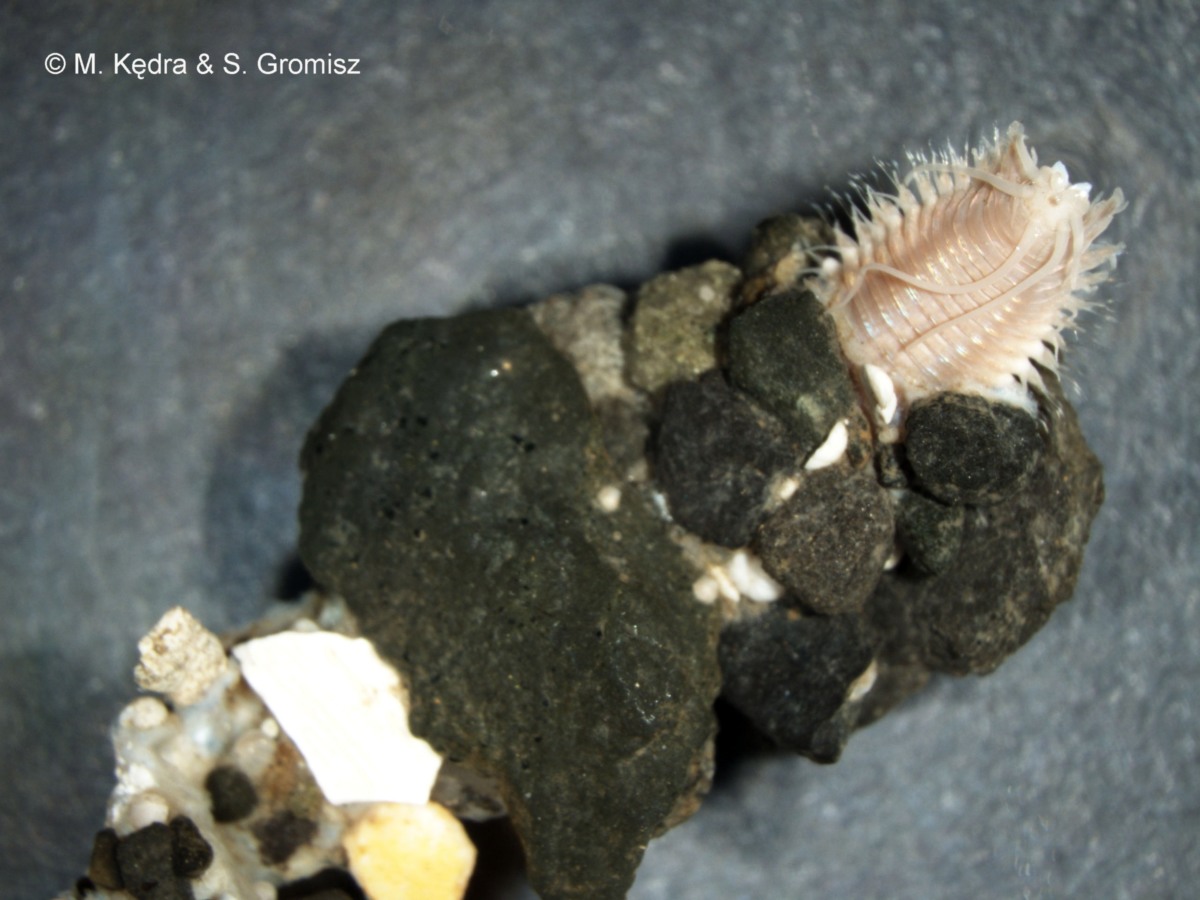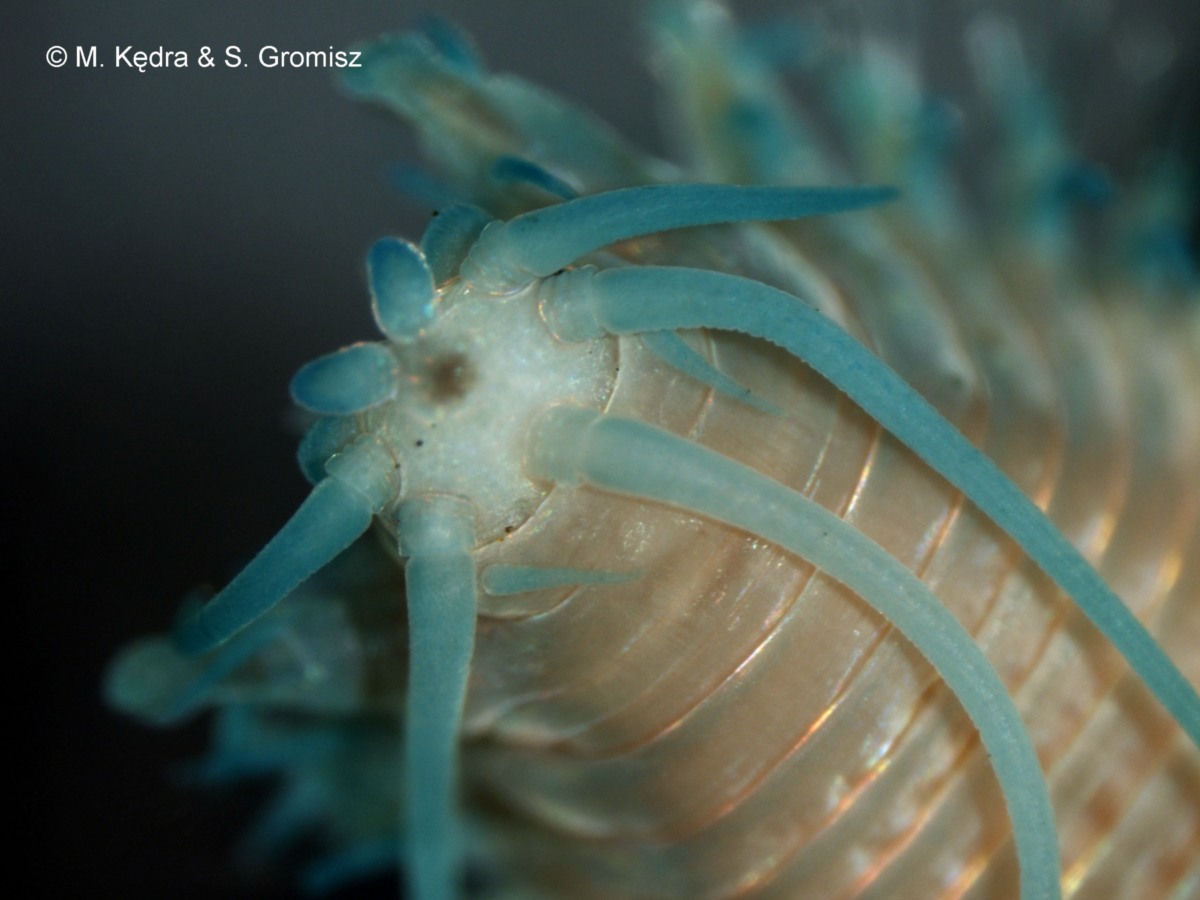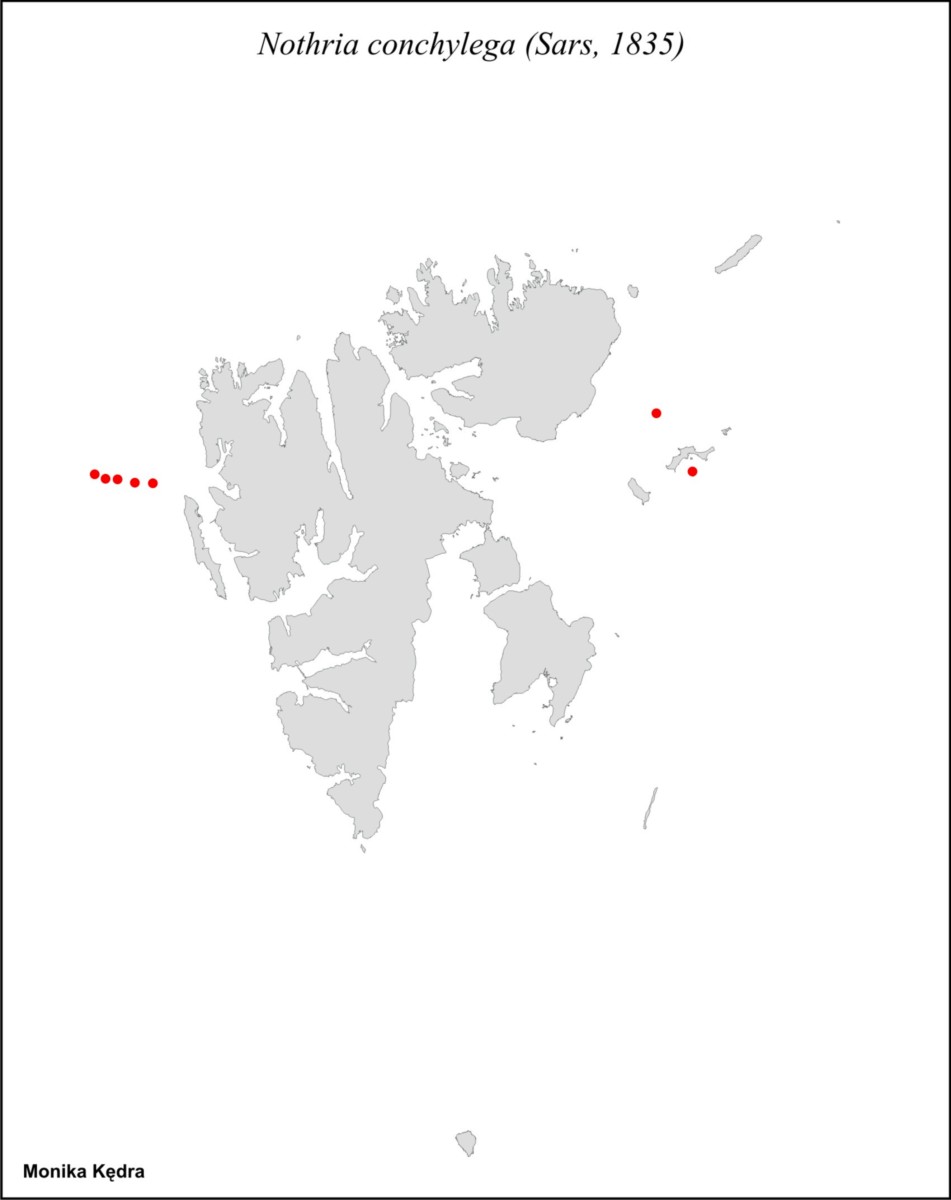Nothria conchylega (Sars, 1835)

|

|

|
Onuphis conchylega Sars, 1835
Onuphis eschrichtii Örsted, 1843
Onuphis jourdei Marion, 1883
Onuphis britannica McIntosh, 1903
Nothria conchylega Fauchald,1982; Malmgren, 1866
Nothria conchyphila Verrill, 1985
Distinguishing characteristics
A pair of slender peristomial cirri.
Branchiae simple beginning on chaetigers 9-13.
Flattened tube completely covered by flattened fragments of shells, stones, pebbles.
Species description
Prostomium short, subconical, with a pair of ovoid or awl-shaped frontal palps and a pair of cushion-like ventral palps. Antennae with a few faint basal rings. 2 large eyes and 2 minute eyes posterior to the frontal antennae. Peristomium shorter than the following chaetigers, with a pair of slender and cylindrical peristomial cirri near the anterior margin. First chaetiger longer than the following chaetigers, with greatly enlarged and anteriorly directed parapodia. Branchiae simple beginning on chaetigers 9-13 and continuing to near the end of the body. First two parapodia with winged capillary chaetae and simple stout hooks. Chaetiger 3 with capillary chaetae and pseudoarticulate unidentate or bidentate hooded hooks. Pygidium with a pair of long cirri. Tube - elongate rectangular, greatly flattened, scabbard-shaped and parchment-like lining completely covered by small, angular, flattened fragments of shells, stones, pebbles.
Size
Up to 150 mm for 150 segments.
Color
Bluish with red transverse bands; whitish yellow with violet brown stripes, with rust coloured spots on bases of parapodia and cirri.
Habitat
At low water and dredged on bottoms of sand, gravel, mud, and various mixtures of mud, sand, broken shells and rocks to depths of 4020 m. The tube lies free on the surface and is transported with the worm when it forages.
Mobility
Discretely motile.
Feeding
Detritus feeder.
Omnivore.
Life cycle
Distribution
Worldwide.

